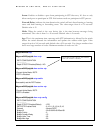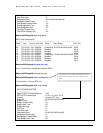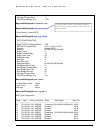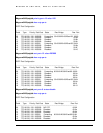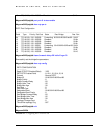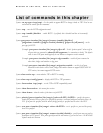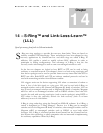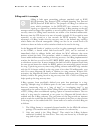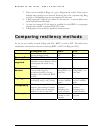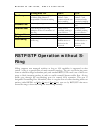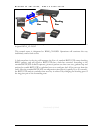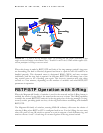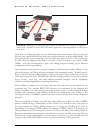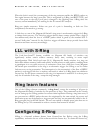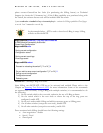
MAGNUM 6K SWITCHES, MNS-6K USER GUIDE
S-Ring and LLL concepts
S-Ring is built upon networking software standards such as IEEE
02.1d Spanning Tree Protocol (STP) or Rapid Spanning Tree Protocol
STP) based on IEEE 802.1w. The purpose of S-Ring is to define two
orts which participate in the RSTP/STP tree structure in a ring
topology as opposed to a meshed topology. S-Ring running on the ring
manager switch leverages this capability to recover quickly from fault situations. The
recovery times for S-Ring based networks are within a few hundred milliseconds.
Recovery time for STP devices is in tens of seconds (typically 30-50 seconds in most
networks) or sub second to a few seconds for RSTP networks. The biggest
advantage of S-Ring, besides the fast recovery time, is the defined ring topology
which makes the network manageable. S-Ring can also be an overall lower cost
solution as there are hubs as well as switches which can be used in the ring.
8
(R
p
j
In the Magnum 6K family of switches as well as in other unmanaged switches such
as the ESD42, a feature called Link-Loss-Learn™ (LLL) can be activated to
immediately flush its address buffer and relearn the MAC addresses that route
packets around the fault. This procedure, which is similar to switch initialization,
occurs within milliseconds, resulting in fast ring recovery. An S-Ring implementation
watches for link-loss as well as for STP/RSTP BPDU packet failures and responds
to whichever occurs first. In most instances the link-loss will be detected faster than
the two-second interval at which the BPDU packets are successfully passed around
the ring. Typical ring recovery times using S-Ring software and mP62 edge switches
with the LLL feature enabled on the ring ports is less than 250 milliseconds, even
with 50 or more Magnum 6K family of switches in a ring structure. Without LLL
activation, the Magnum 6K family of switches address buffer aging time (5 minutes
default) could be the gating factor in ring recovery time. LLL is used on S-Ring and
helps speed up the ring recovery time.
S-Ring operates from specifically defined port pairs that participate in a ring-
topology. Multiple rings of different pairs on the same switch are also supported;
however, intersecting rings or a “ring of rings” or “overlapping rings” is not
supported in the current version. While S-Ring builds upon the foundation of RSTP
or STP, S-Ring offers an additional topology option to network architects. The two
ends of a ring must be connected to two ports in a Magnum 6K Switch that is
enabled with the S-Ring software. The end points of the ring provide an alternate
path to reach the switch that has failed. The in-out pairs of the ports to other devices
in the ring have to be enabled with LLL. Some items to be aware of with S-Ring are
as follows:
1. The S-Ring feature is a separately licensed module for the MNS-6K software
package. This module must be enabled by means of a software key
2. Only one switch is the “Ring Master”. That switch has S-Ring Software
authorized (enabled) for that device. Thus only one license key is needed per
ring (and not per switch)
175



